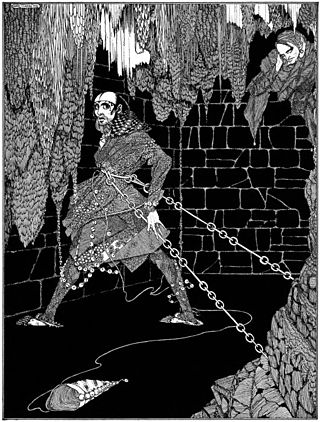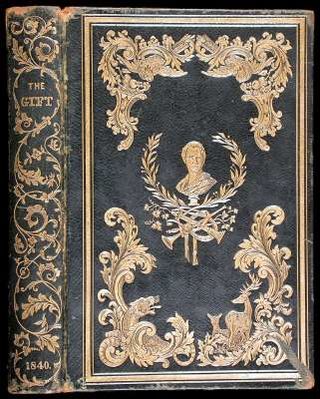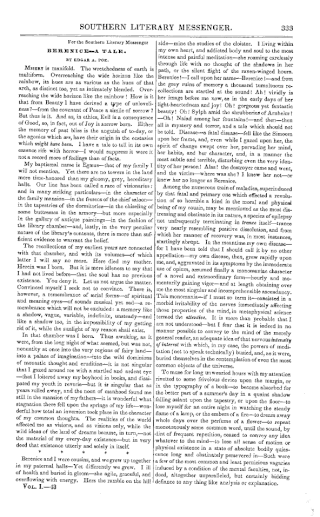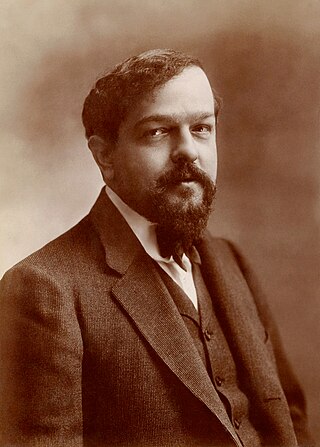
"The Tell-Tale Heart" is a short story by American writer Edgar Allan Poe, first published in 1843. It is told by an unnamed narrator who endeavors to convince the reader of the narrator's sanity while simultaneously describing a murder the narrator committed. The victim was an old man with a filmy pale blue "vulture-eye", as the narrator calls it. The narrator emphasizes the careful calculation of the murder, attempting the perfect crime, complete with dismembering the body in the bathtub and hiding it under the floorboards. Ultimately, the narrator's actions result in hearing a thumping sound, which the narrator interprets as the dead man's beating heart.

"The Cask of Amontillado" is a short story by the American writer Edgar Allan Poe, first published in the November 1846 issue of Godey's Lady's Book. The story, set in an unnamed Italian city at carnival time, is about a man taking fatal revenge on a friend who, he believes, has insulted him. Like several of Poe's stories, and in keeping with the 19th-century fascination with the subject, the narrative follows a person being buried alive – in this case, by immurement. As in "The Black Cat" and "The Tell-Tale Heart", Poe conveys the story from the murderer's perspective.

"Annabel Lee" is the last complete poem composed by American author Edgar Allan Poe. Like many of Poe's poems, it explores the theme of the death of a beautiful woman. The narrator, who fell in love with Annabel Lee when they were young, has a love for her so strong that even angels are envious. He retains his love for her after her death. There has been debate over who, if anyone, was the inspiration for "Annabel Lee". Though many women have been suggested, Poe's wife Virginia Eliza Clemm Poe is one of the more credible candidates. Written in 1849, it was not published until shortly after Poe's death that same year.

"The Fall of the House of Usher" is a short story by American writer Edgar Allan Poe, first published in 1839 in Burton's Gentleman's Magazine, then included in the collection Tales of the Grotesque and Arabesque in 1840. The short story, a work of Gothic fiction, includes themes of madness, family, isolation, and metaphysical identities.

"William Wilson" is a short story by American writer Edgar Allan Poe, first published in 1839 in The Gift, with a setting inspired by Poe's formative years on the outskirts of London. The tale features a doppelgänger. It also appeared in the 1840 collection Tales of the Grotesque and Arabesque, and has been adapted several times.

"Berenice" is a short horror story by American writer Edgar Allan Poe, first published in the Southern Literary Messenger in 1835. The story is narrated by Egaeus, who is preparing to marry his cousin Berenice. He tends to fall into periods of intense focus, during which he seems to separate himself from the outside world. Berenice begins to deteriorate from an unnamed disease until only her teeth remain healthy. Egaeus obsesses over them. When Berenice is buried, he continues to contemplate her teeth. One day, he awakens with an uneasy feeling from a trance-like state and hears screams. A servant reports that Berenice's grave has been disturbed, and she is still alive. Beside Egaeus is a shovel, a poem about "visiting the grave of my beloved", and a box containing 32 teeth.

"Ligeia" is an early short story by American writer Edgar Allan Poe, first published in 1838. The story follows an unnamed narrator and his wife Ligeia, a beautiful and intelligent raven-haired woman. She falls ill, composes "The Conqueror Worm", and quotes lines attributed to Joseph Glanvill shortly before dying.
"The Spectacles" is a short story by Edgar Allan Poe, published in 1844. It is one of Poe's comedy tales.

The Fall of the House of Usher is an opera by Peter Hammill (music) and Chris Judge Smith (libretto). It is based on the 1839 short story of the same name by Edgar Allan Poe.
"Metzengerstein: A Tale in Imitation of the German" is a short story by American writer and poet Edgar Allan Poe, his first to see print. It was first published in the pages of Philadelphia's Saturday Courier magazine, in 1832. The story follows the young Frederick, the last of the Metzengerstein family, who carries on a long-standing feud with the Berlifitzing family. Suspected of causing a fire that kills the Berlifitzing family patriarch, Frederick becomes intrigued with a previously unnoticed and untamed horse. Metzengerstein is punished for his cruelty when his own home catches fire and the horse carries him into the flame. Part of a Latin hexameter by Martin Luther serves as the story's epigraph: Pestis eram vivus—moriens tua mors ero.
"The Haunted Palace" is a poem by Edgar Allan Poe. The 48-line poem was first released in the April 1839 issue of Nathan Brooks' American Museum magazine. It was eventually incorporated into "The Fall of the House of Usher" as a song written by Roderick Usher.
"A Predicament" is a humorous short story by Edgar Allan Poe, usually combined with its companion piece "How to Write a Blackwood Article". It was originally titled "The Scythe of Time". The paired stories parody the Gothic sensation tale, popular in England and America since the early 19th century.

Edgar Allan Poe has appeared in popular culture as a character in books, comics, film, and other media. Besides his works, the legend of Poe himself has fascinated people for generations. His appearances in popular culture often envision him as a sort of "mad genius" or "tormented artist", exploiting his personal struggles. Many depictions of Poe interweave elements of his life with his works, in part due to Poe's frequent use of first-person narrators, suggesting an erroneous assumption that Poe and his characters are identical.

Tales of the Grotesque and Arabesque is a collection of previously published short stories by Edgar Allan Poe, first published in 1840.

Le diable dans le beffroi is an unfinished comic opera in one act by Claude Debussy to his own libretto, based on Edgar Allan Poe's short story "The Devil in the Belfry".

La chute de la maison Usher is an unfinished opera in one act by Claude Debussy to his own libretto, based on Edgar Allan Poe's 1839 short story "The Fall of the House of Usher". The composer worked on the score between 1908 and 1917 but it was never completed.
La chute de la maison Usher is the French translation of the title of Edgar Allan Poe's tale The Fall of the House of Usher (1839). The most famous French translation of the story is by Charles Baudelaire. It is the basis of the following works:
Edgar Allan Poe's 1842 short story "The Masque of the Red Death" has been depicted and referenced numerous times in popular culture.
"The Fall of the House of Usher" is an 1839 short story by Edgar Allan Poe.
The Fall of the House of Usher is a 1988 opera by Philip Glass to a libretto based on Edgar Allan Poe's 1839 short story by Arthur Yorinks who also worked with Glass on The Juniper Tree.











